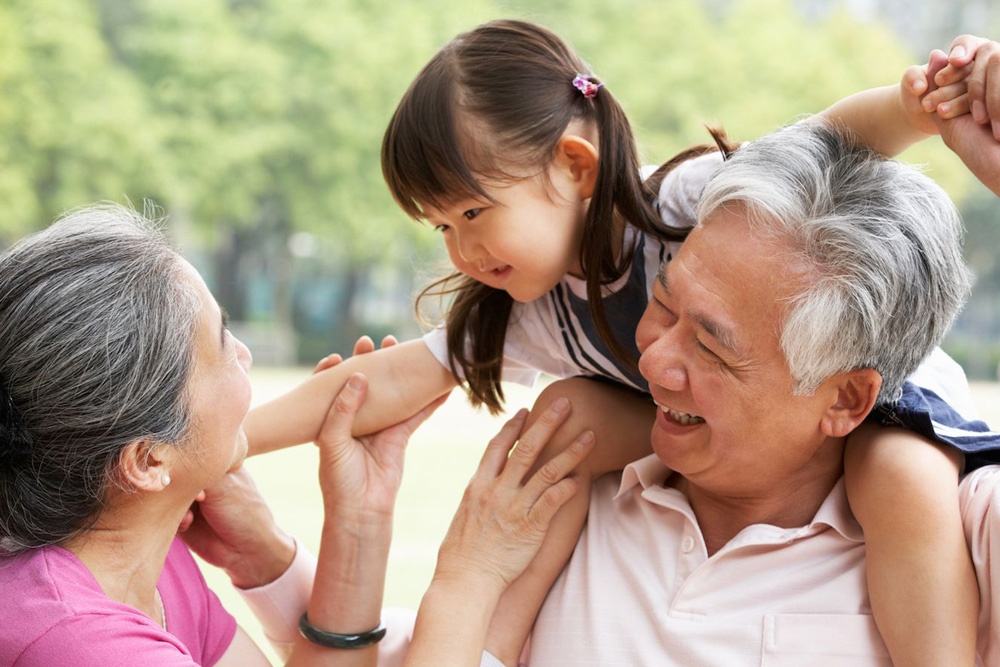
by North Shore Child & Family Guidance Center | Nov 2, 2017 | Blog
Taking care of someone with an illness, whether it’s a mental or physical one, can feel overwhelming at times. At North Shore Child & Family Guidance Center, we recognize the stress that comes with the role of caregiver, and we run several support groups to help caregivers get the help they need.
Sometimes what’s needed most is just a safe place to talk about your feelings with others who can relate to what you are going through; other times, it’s getting more concrete help, like finding qualified professionals who can relieve some of the burden so you have time to take care of yourself, or learning about how to advocate for your child at school.
One of our programs, Caregiver Grandparent Respite and Support Program, or C-GRASP, offers help to grandparents who are the primary caregivers of their grandchildren. With the assistance of other local entities, we provide them with a variety of services, including counseling, clothing, food, housing assistance and transportation.
“If a parent, grandparent or other caregiver has no time to spend on their own needs, they’re likely to have a much harder time dealing with the child or teen who may require a high level of supervision,” says Andrew Malekoff, Executive Director of the Guidance Center. “We realize what a stressful situation this can be, and consider it part of our role to make sure that these caregivers have the support they need.”
Groups are a great source of help, he adds. “We all need affirmation, support and understanding. In a group there is no need to put on airs or to pretend to be someone one is not in order to gain acceptance.”
And, of course, there are times when caregivers are nourished by solitude. “Such moments can generate creative expression—expression for no reason but to satisfy one’s soul,” says Malekoff. “Music, art or writing can provide much-needed respite from the daily stress of caregiving.”
Following are 10 tips provided by the Caregiver Action Network:
- Seek support from other caregivers. You are not alone!
- Take care of your own health so that you can be strong enough to take care of your loved one.
- Accept offers of help and suggest specific things people can do to help you.
- Learn how to communicate effectively with doctors.
- Caregiving is hard work so take respite breaks often.
- Watch out for signs of depression and don’t delay getting professional help when you need it.
- Be open to new technologies that can help you care for your loved one.
- Organize medical information so it’s up to date and easy to find.
- Make sure legal documents are in order.
- Give yourself credit for doing the best you can in one of the toughest jobs there is!
To learn more about our programs and services, call (516) 626-1971 or click here.
Sources:
http://caregiveraction.org

by North Shore Child & Family Guidance Center | Oct 25, 2017 | Blog
Halloween is just days away, and kids of all ages are gearing up for the festivities. Before your children go trick or treating, here are 10 tips on how to make sure they are safe and sound as they celebrate the candy-filled holiday.
- Children 11 and under should not trick or treat at night without an adult. If they are old enough to go out without a grownup, they should go with a group and remain in well-known, well-lit areas.
- Remind them NOT to use their cellphones for texting while they’re trick or treating. They should keep their heads up and their eyes focused on where they are walking, not on the tech gear!
- Teach kids to be extra careful of cars; they should never dash from one side of the street to another, and instead cover one side at a time.
- Adults should drive extra carefully on Halloween, both during the day and in the evening. You can’t count on youngsters to follow the rules, so slow down! Be especially careful when pulling into or out of your driveway.
- When it comes to costumes, the lighter the color the better. It will make them much easier to see when it gets dark. For extra safety, add reflective tape or stickers to their costumes or trick-or-treat bags, or have them wear or carry glow sticks or a flashlight.
- Nontoxic makeup and face paint are better than masks, which can block your child’s vision. Test the makeup a day or two ahead of time to make sure there are no allergies.
- Check that shoes fit securely and costumes are not too long, to prevent tripping.
- Speaking of tripping, remove hoses, garden tools, bikes and other possible hazards from your front lawn and porch.
- Though candy tampering is rare, go through your kids’ candy before allowing them to eat it; throw away anything with a tear in the wrapper or that is homemade; and set limits on how much candy per day can be consumed.
- 10. Keep pets indoors and away from the front door. It’s especially important to bring your black cat inside, since they are at an even greater risk of harm.
Sources:
www.safekids.org
https://www.aap.org
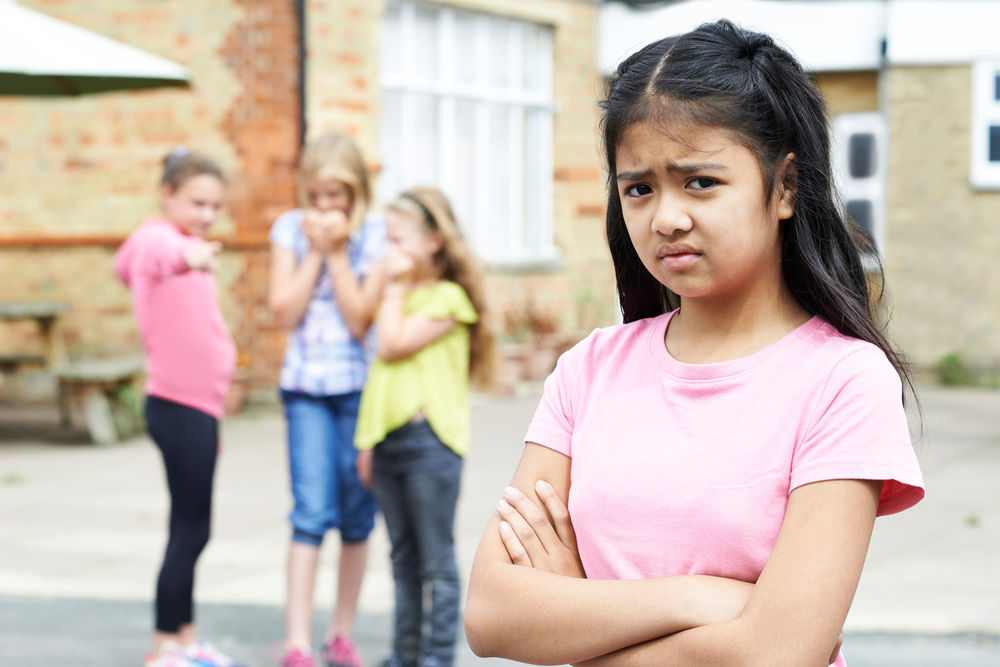
by North Shore Child & Family Guidance Center | Oct 19, 2017 | Blog
Bullying is not a new phenomenon. Ever since there were kids and schoolyards—or likely way before that—there have been bullies.
In today’s world, bullying has taken on a whole new dimension. Rather than just a school or neighborhood phenomenon, mean messages can be spread widely with the click of a button.
We’ve all likely experienced bullying at some point in our lives. Bullying runs the gamut from gossiping, spreading rumors and making threats to physical and verbal attacks.
Although bullying knows no age limit, middle school is a particularly active time for bullies to do their worst. And its effects can be devastating. According to the U.S. Department of Health and Human Services’ anti-bullying website, Stopbullying.gov:
- About 160,000 teens reportedly skip school every day because they are bullied, and 1 in 10 teens drops out of school due to repeated bullying.
- 83 percent of girls and 79 percent of boys report being bullied either in school or online.
- 75 percent of school shootings have been linked to harassment and bullying against the shooter.
- Students who are bullies as young adults continue the trend of abuse and violence into adulthood. By the age of 30, approximately 40 percent of boys who were identified as bullies in middle and high school had been arrested three or more times.
One of a bully’s most insidious tools is intimidation, which makes many children and teens reluctant to report the behavior. That’s one reason it’s very important for schools and parents to tackle this problem head on, educating our youth on what bullying is and what they can do when they witness it or experience it themselves.
Following are some tips from Dr. Sue Cohen, director of the Guidance Center’s Marks Family Right From the State 0-3+ Center.
- Don’t remain silent if you’re being bullied. Look the bully in the eye and tell him or her to stop in a calm, firm voice. If it seems unsafe, walk away immediately. Either way, tell a trusted adult about the incident.
- Speak up when you see a child being bullied. If your child is afraid to confront the bully directly, they can seek out an adult, such as a teacher, counselor or parent. But silence encourages the behavior.
- Befriend the bullying victim. Invite them to sit with you at lunch or to hang out. It will let them know they aren’t alone.
- If you are being bullied online, tell your parents. Listen to their advice on what is OK and what isn’t online. Click here to learn more from Stomp Out Bullying.
- Protect yourself online by using smart practices. Be kind to others, and never post anything out of anger or that is gossip. Also, never pass on a nasty message, photo or rumor about anyone.
- Keep open lines of communication among children, teachers and school administrators.
- Look for signs that your child is using verbal or physical aggression to deal with conflict, talking about getting even with others or suddenly has items that don’t belong to him/her. You need to know if your child is engaging in bullying behavior.
Finally, if you are a parent and your child is being bullied at school or by other students outside of school, don’t confront the bully or the parents. Contact the school principal or guidance counselor, and contact the police if your child is threatened with harm.
Sources:
https://www.stopbullying.gov
http://www.stompoutbullying.org/
https://www.huffingtonpost.com/jamie-davis-smith/bully-that-tips-for-kids-and-parents-for-dealing-with-bullies_b_7829724.html
http://www.sduhsd.net/documents/Parents%20and%20Students/School%20Safety/F%20-%20Bullying%20Statistics%202014%20-%20Facts.pdf

by North Shore Child & Family Guidance Center | Oct 11, 2017 | Blog
Being a teenager brings with it many challenges, especially in a world where technology can spread a nasty message throughout a school in minutes.
But, while all teenagers face the prospect of being bullied, for teens who identify as LGBTQ (lesbian, gay, bisexual, transgender or questioning), the statistics are especially alarming:
• LGBTQ youth are nearly twice as likely to be called names, verbally harassed or physically assaulted at school compared to their non-LGBTQ peers, according to Human Rights Watch.
• LGBTQ youth are four times more likely to attempt suicide than their heterosexual counterparts, according to the Centers for Disease Control and Prevention.
• The National Alliance on Mental Illness reports that LGBTQ individuals are nearly three times more likely to experience a mental health condition such as major depression or generalized anxiety disorder than their peers.
Over the last few years, North Shore Child & Family Guidance Center has seen a steady rise in the number of clients who identify as LGBTQ.
“At this age, most adolescents are experiencing some feelings of disenfranchisement, be it from peers or parents,” says Amanda Martin, a social worker at the Guidance Center who runs the group specifically for LGBTQ clients. “LGBTQ youth experience this at a much more intense level, coupled by fears of being abandoned, outed, physically hurt or completely ostracized by the ones they love.”
Meaghan Miller, a mental health counselor at the Guidance Center, says that when one of her teen clients first came here for treatment for anxiety and alcohol abuse, it became clear that her identity as an LBGTQ individual was a major cause of her mental health and alcohol issues. She had bravely come out to her mother, but the reaction was devastating. “Her mother said ‘People can’t know this, what did I do wrong, what will people say about me?’ ” says Miller.
Miller advises parents to keep the lines of communication open with their children. “Parents need to engage with their child by asking questions, listening and verbalizing their support and love,” she says.
Schools can also play a crucial role in supporting their LGBTQ students. They should have an anti-bullying policy or code of conduct that includes language specifically prohibiting harassment of LGBTQ-identified students.
The services these individuals receive at the Guidance Center are in many ways similar to the services all of our clients receive, but with an added awareness and sensitivity to the issues that come with being LGBTQ in our society.
“For these kids, if they have not come out to their families and/or friends, it can manifest in many mental health-related ways, including depression, anxiety, isolation, self-harm, suicidal ideation/thinking, planning or acting on suicidal feelings,” says Martin. “Our work is helping these kids find a support system so they feel safe and conducting family therapy to develop acceptance regarding the child as a whole person, not solely this one aspect defining the relationship they have with the people in their lives.”
We’re always working to meet the needs of the community with expanded programming. For more information, follow us on our Facebook page; visit our website, www.northshorechildguidance.org; or call us at (516) 626-1971.
Sources: https://www.hrw.org/report/2016/12/07/walking-through-hailstorm/discrimination-against-lgbt-youth-us-schools
https://www.cdc.gov/lgbthealth/youth.htm
https://www.nami.org/Find-Support/LGBTQ
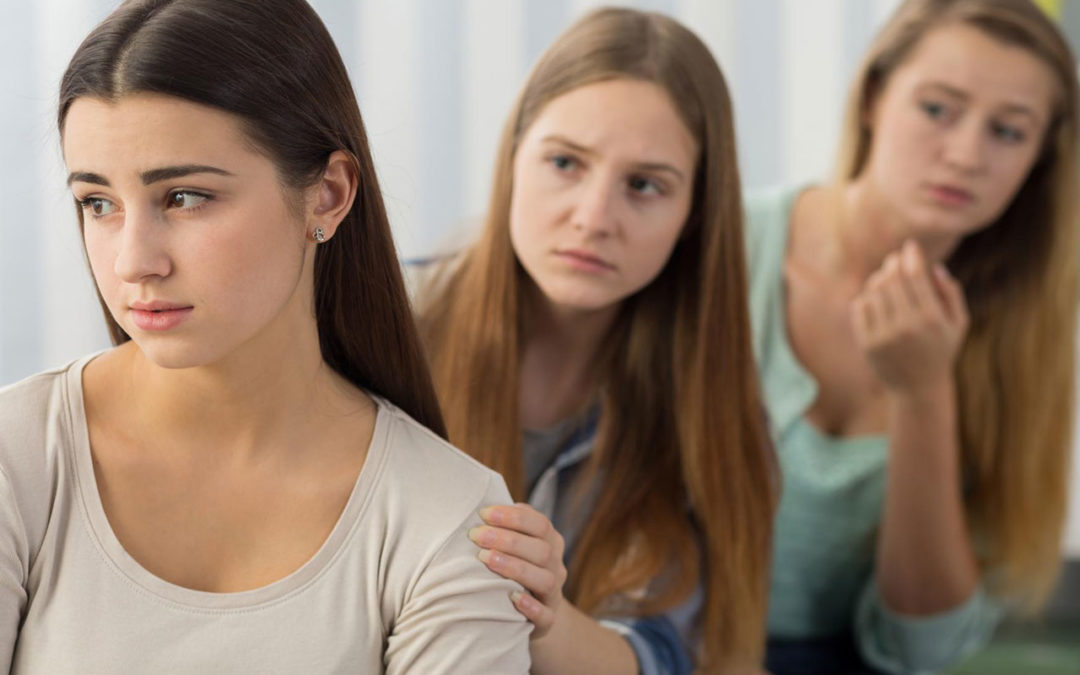
by North Shore Child & Family Guidance Center | Oct 5, 2017 | Blog
Do you know someone with a mental illness? Odds are that, even if you don’t know it, you have a friend, colleague or a family member who experiences some form of mental illness, whether it’s severe depression, anxiety, bipolar disorder or a host of other conditions.
This week has been designated as Mental Illness Awareness Week, and it’s a good time to look at some facts that might surprise you: According to the National Institute of Mental Health (NIMH), 1 in 5 youth aged 13–18 (21.4%) experiences a severe mental disorder at some point during their life. For children aged 8–15, the estimate is 13%.
Although more children suffer from psychiatric illness than autism, leukemia, diabetes and AIDS combined, only one of five with an emotional disturbance gets treatment from a mental health specialist.
Andrew Malekoff, Executive Director of North Shore Child & Family Guidance Center, asks, “Why do we continue to treat illnesses above the neck differently than illnesses below the neck? The sad truth is that, although there has been some progress, there’s still a stigma about mental health. The result is that parents often wait months or even years to ask for help.”
The National Alliance on Mental Illness (NAMI) states that the consequences of stigma are far-reaching and potentially devastating. Stigma means that people living with mental health conditions are:
- Alienated and seen as “others.”
- Perceived as dangerous.
- Seen as irresponsible or unable to make their own decisions.
- Less likely to be hired.
- Less likely to get safe housing.
- More likely to be criminalized than offered health care services.
- Afraid of rejection to the point that they don’t always pursue opportunities.
How can you help end the stigma?
The first step, says Malekoff, is to educate yourself about mental health and mental illness so you can challenge misconceptions, myths and generalizations about people with mental health problems. Both the NIMH and NAMI websites are great resources, as is the Bring Change to Mind site.
Some more suggestions from Malekoff:
- Be aware of language that you use that reinforces stigma, like saying someone is “crazy” or “psycho” or “a nut job,” for example.
- Eliminate the phrase “suffers from mental illness” and replace it with “lives with mental illness” or “is affected by mental illness.” I.e., instead of saying “Joe is bipolar,” say “Joe is living with bipolar disorder.”
- Be thoughtful and empathic when communicating with someone who is suffering from a mental illness such as anxiety or depression, or with a parent whose child might be struggling with a mental health problem.
- Don’t avoid the subject; instead, ask questions in a supportive manner if you’re not sure what is happening. For example, you might say, “I don’t mean to pry but it seems like you’re struggling. I’m here for you if you need me.”
- Understand that people suffering from mental illness are not the sum of their broken, hurt or troubled parts, but they are whole people; try to relate to the whole person, not just the broken parts.
Take a look at this video from Bring Change to Mind for more on how to end the stigma: https://youtu.be/rcUmmNLHW9A
Sources:
https://www.nami.org/Get-Involved/Awareness-Events/Mental-Illness-Awareness-Week
https://www.nimh.nih.gov/health/statistics/prevalence/any-disorder-among-children.shtml
http://bringchange2mind.org/talk/choose-your-words/

by North Shore Child & Family Guidance Center | Sep 27, 2017 | Blog
We’ve all heard the complaint that, because of government and state education policies, teachers are being forced more and more to “teach for the test.” That leaves them little time for engaging children in more creative forms of learning.
For their part, parents are often overwhelmed by the responsibilities of balancing work and family time, making it harder to put their energies into encouraging creative pursuits by their offspring. Plus, kids themselves are overbooked with after-school sports, clubs and homework, giving them little unscheduled time to let their imaginations take flight.
Of course, while there are technology-related tools that require lots of creativity (programs and apps for art, music and more), many kids are hooked on the more mindless types of video games or are addicted to texting in its many form—another way that they’re losing out on free time to pursue creative expression.
At North Shore Child & Family Guidance Center, we incorporate many activities that encourage creativity, which is crucial to healing emotional trauma and also fostering happiness and self-esteem.
“In addition to talk therapy, we use many creative outlets to encourage kids to express their emotions,” says Andrew Malekoff, Executive Director of the Guidance Center. “We have two organic gardens that engage children’s senses, and we also have a Nature Nursery which is primarily designed for our early childhood population of children under 6 years of age. It features a variety of ‘tools,’ including a rock and water garden, herbs, shells, pine cones, wind chimes, pots and pans and more, all designed to help children explore the sights, sounds, smells and touch of nature. It’s a great way to foster creativity, and creativity promotes emotional, social, cognitive and physical development.”
Here are some tips on how to promote creativity:
- Expose your child to the big wide world with trips both far and near—parks, museums, concerts, etc.
- Use one of the best resources for any parent: your local library. Most have many free workshops for kids and teens, from learning to make bracelets to exploring the solar system.
- Give your child some free time to play with friends or on his or her own. If they are booked back to back, they’re missing the time needed to use their imaginations.
- Video games geared toward writing, art, science and even just having fun can be great tools for your child. Click here for 10 recommended games and here for Parents Choice Award winners
- Keep your radar up for what kinds of things excite your child, and encourage them to pursue their interests.
- Let your kids be “bored” during the day. They need to be bored in order to stimulate their brains to come up with ways to amuse themselves. Boredom begets creativity!
- Ask your kids to participate in your everyday tasks, like cooking, raking leaves or doing yoga. It’s not only creative, but a great bonding experience!
Sources:
http://loveplayandlearn.com/importance-creativity-foster/
http://electronics.howstuffworks.com/family-tech/tech-for-kids/10-educational-video-games-your-kids-will-love.htm
http://www.brucevanpatter.com/keepkidscreative.html
http://blog.parents-choice.org/awards/

by North Shore Child & Family Guidance Center | Sep 20, 2017 | Blog
In a recent blog, we talked about the importance of teaching mental health as part of school curriculum. In fact, Gov. Andrew Cuomo signed legislation last year that requires schools to provide instruction in mental health on or after July 1, 2018.
But earlier legislation also required schools to include education on the use of alcohol, tobacco and other substances.
All of these areas are extremely important to bring into the school curriculum. While parents play a huge role in their child’s education, schools are where your kids spend a great part of their time five days a week, and it would be a shame—and also against New York State law—for schools to miss the opportunity to share important information to aid in children’s mental and physical health.
One area that’s relatively new in the discussion of substance abuse involves vaping, described as follows by the National Center on Addiction and Substance Abuse.
Vaping is the act of inhaling and exhaling the aerosol, often referred to as vapor, which is produced by an e-cigarette or similar device. The term is used because e-cigarettes do not produce tobacco smoke, but rather an aerosol, often mistaken for water vapor, that actually consists of fine particles. Many of these particles contain varying amounts of toxic chemicals, which have been linked to cancer, as well as respiratory and heart disease.
Clearly, the idea that e-cigarettes are a healthy alternative to tobacco is dead wrong—in fact, most e-cigarettes contain nicotine solutions. Sadly, the use of e-cigarettes among teens and even middle schoolers is increasing dramatically. According to the Centers for Disease Control and Prevention, more than 3 million teens used e-cigs in 2015, a tenfold increase over four years. Middle schoolers are also using them in much larger numbers, with the rate of e-cig use rising to 5 percent, from 0.6 percent in 2011.
Unlike with tobacco, the makers of e-cigarettes are allowed to use sweet flavorings like vanilla or other candy and dessert flavors, clearly an attempt to hook younger users on their product. Since studies show that e-cigarette use is higher than the use of regular cigarettes, it appears that the marketing is working, and that the mistaken idea that these products are safe has taken hold.
So what is a parent to do? First, let your kids know that e-cigarettes are not safe alternatives to cigarettes. The studies increasingly show that they can cause:
- Damage to the brain, heart and lungs
- Cancerous tumor development
- Preterm deliveries and stillbirths in pregnant women
- Harmful effects on brain and lung development, when use occurs during fetal development or adolescence
They also probably don’t know that most e-cigarettes contain nicotine, which is a known carcinogen and also is highly addictive. It also increases the risk of a variety of both physical and mental health problems later in life. So, if they tell you, Mom, these aren’t like cigarettes, you can tell them the reality.
Another point that’s important for kids to know: the additives, heavy metals, ultrafine particles, and other ingredients in e-cigarettes are toxic carcinogens—hardly a safe alternative to regular cigarettes. In addition, according to a Yale study, nearly one in five e-cigarette users has also used e-cigarettes for marijuana, or marijuana byproducts like hash oil. Some teens are also using these devices to vaporize opiates and forms of “synthetic weed” such as K2 and Spice.
“One important fact is that adolescents use vapes because there is no smell,” explains Kathy Knaust, Clinical Supervisor for the Drug and Alcohol Program at the Guidance Center’s Leeds Place location. “Marijuana use is often detected by the strong odor burning it gives off, but with vaping use it is not detected by odor so they need to be very aware of the physical and behavioral effects of various substances.” Some of those effects include short-term memory loss, anxiety, hallucinations and feelings of panic.
Hopefully, with the schools backing up these facts about vaping, your kids will heed your message and stay away from this new form of substance abuse. But if you discover that your kids are vaping, take it seriously. Contact the Guidance Center at (516) 626-1971.
Sources:
https://www.centeronaddiction.org/e-cigarettes/about-e-cigarettes/10-surprising-facts-about-e-cigarettes
https://yourteenmag.com/drugs-alcohol/using-e-cigarettes-for-marijuana
https://www.centeronaddiction.org/e-cigarettes/recreational-vaping/what-vaping
https://www.theverge.com/2016/12/29/14117964/e-cigarette-vaping-increase-teens-cdc-health-risks
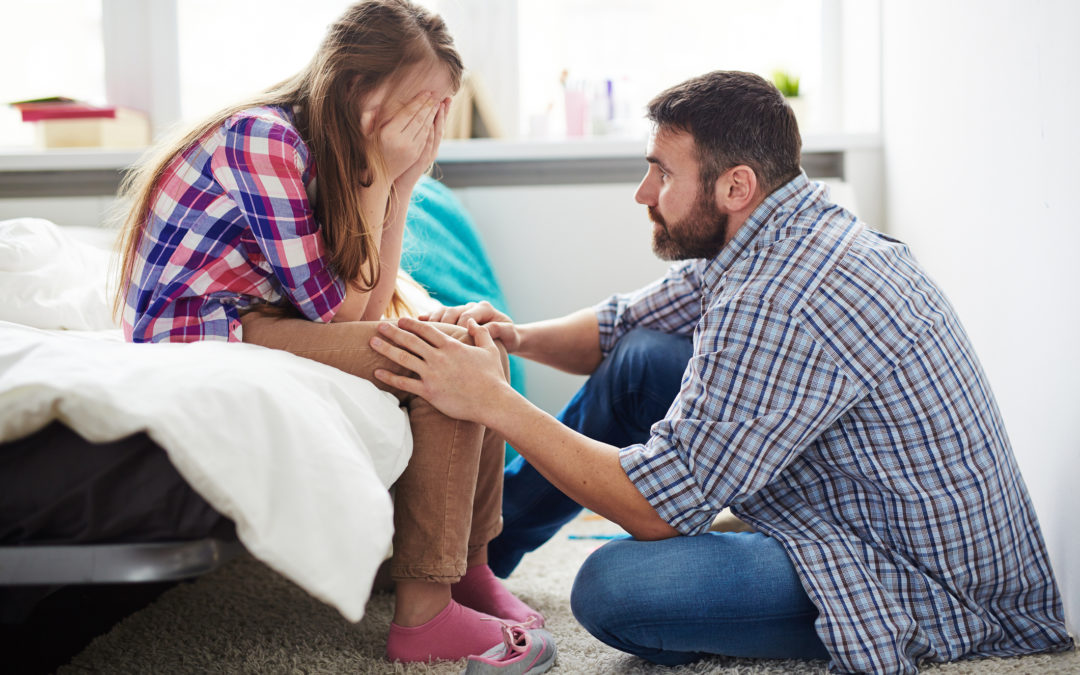
by North Shore Child & Family Guidance Center | Sep 13, 2017 | Blog
It’s the ultimate tragedy. When any child, teen or adult commits suicide, the reverberations can devastate friends, destroy families and spread fear and sorrow throughout communities.
Suicide knows no race, gender or economic status—and teens or even younger children are at risk. According to the Centers for Disease Control and Prevention (CDC), suicide is the third leading cause of death among individuals between the ages of 10 and 14, and the second leading cause of death among individuals between the ages of 15 and 34. It is far more rare—though not unheard of—for children younger than 10 to commit suicide, but it does happen. About four out of every 500,000 children below the age of 12 commit suicide annually, reports the CDC.
First, parents must be open to believing the risk is real and not assume that their child or teen’s behavior is just a normal part of adolescence, says Elissa Smilowitz, LCSW-R, Coordinator of Triage and Emergency Services at North Shore Child & Family Guidance Center. “Parents say, ‘Teenagers are supposed to be moody, aren’t they?’ Yes, but it is the severity of the mood that parents need to look at.”
Smilowitz points out some of the warning signs: “Look for changes in their behavior that aren’t typical for them.”
She cites:
- Withdrawing from friends and family
- Sleeping all day
- Being depressed and crying often
- Posting suicidal thoughts on the Internet
- Talking about death and not being around anymore
- Cutting themselves
- Increasing aggressiveness or irritability
Other things to consider: Is there a family history of mental illness, suicide or substance abuse? A study by Johns Hopkins Children’s Center reports that those who lost a parent to suicide as children or teens were three times more likely to commit suicide than children and teenagers with living parents.
So, what do you do if you suspect your child or teen may be suicidal? The first step is to consult a mental health professional. The Guidance Center has a Triage & Emergency Services program that offers a rapid response to psychiatric emergencies. Our team will assess if the situation appears urgent and will make an appointment to see the child within 24 to 48 hours (if it’s deemed extremely urgent, we do advise you go to the Emergency Room).
It’s very important that you communicate your concern to your child in a loving, non-judgmental way, says Smilowitz. “Talking about suicide will not make your child more likely to act upon it,” she says. “The opposite is true. Also, let them know that you believe that getting help is not a weakness, but rather shows their strength.”
If you or a member of your family are in crisis, call the toll-free National Suicide Prevention Lifeline at 1-800-273-TALK (8255), available 24 hours a day, 7 days a week
Sources:
http://www.hopkinsmedicine.org/news/media/releases/children_who_lose_a_parent_to_suicide_more_likely_to_die_the_same_way
http://www.slate.com/articles/news_and_politics/recycled/2010/04/do_children_commit_suicide.html
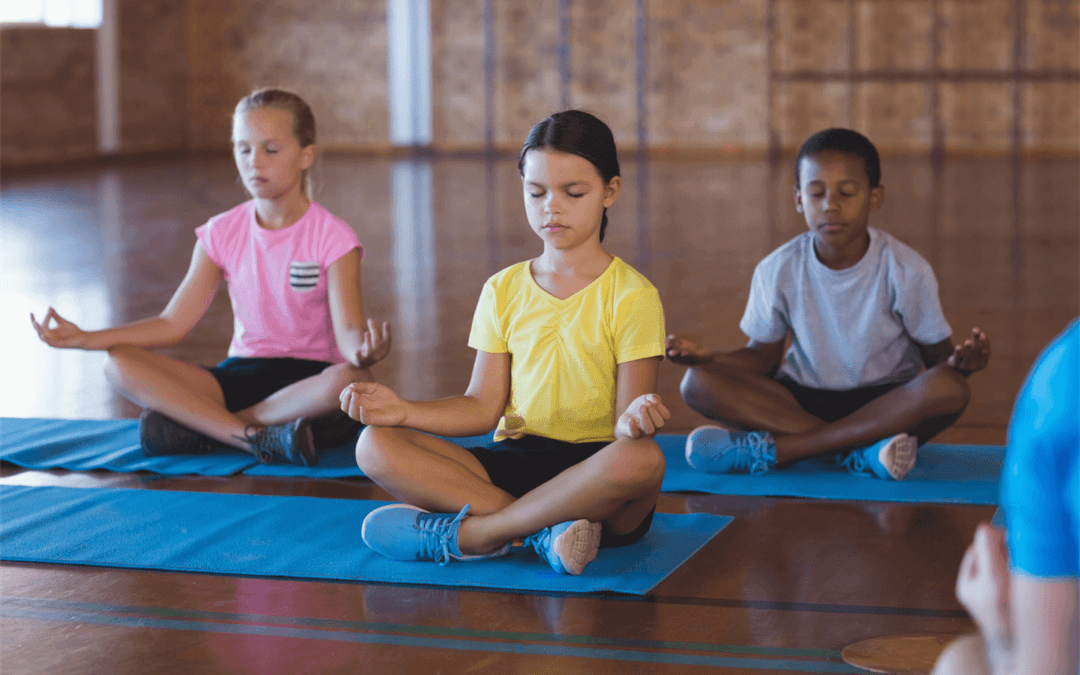
by North Shore Child & Family Guidance Center | Sep 6, 2017 | Blog
September is National Yoga Month, designed to educate the public about the health benefits of yoga and to inspire a healthy lifestyle.
How does yoga relate to our mission to restore and strengthen the emotional wellbeing of children and families? According to the American Psychological Association, yoga relieves stress and anxiety, reduces muscle tension and inflammation, and calms the nervous system. It has even been shown to help reduce depression.
Another area that’s shown to improve from yoga practice is PTSD, and that’s been clear to Amalia Sirica, a therapist at North Shore Child & Family Guidance Center who has used yoga with some of her therapy groups. “In people who experience trauma and PTSD, the mind is always on high alert,” she explains. “We’ve seen this alarm response calm down even after just one session of yoga. I can’t say enough about its benefits.”
In an article in Yoga Journal, yoga teacher and licensed psychotherapist Ashely Turner put it this way: “Yoga is a psychology—the whole practice helps us work with the nature of the mind, the nature of being a human, how emotions live in our bodies, how they affect our behavior and our minds.”
Here are some of the top benefits of yoga in the treatment of mental health conditions.
- Yoga helps increase your sense of self-esteem. Healthy self-esteem is a critical component to feeling emotionally healthy. Yoga encourages you to develop a nonjudgmental relationship with your thoughts, so you’re less likely to think of yourself as “bad” or “flawed” or “crazy.”
- Yoga encourages you to be more mindful. Living in the present moment and not obsessing about the past or future leads to a calmer, more accepting state of mind.
- Yoga creates a relaxation response within the body. A quiet mind and body help both with your mood and your sleep.
- Yoga increases “feel good” neurotransmitters known as GABA (gamma-aminobutyric acid). This allows for a more tranquil mind, allowing your brain to take a break and reduce the pace of obsessive thoughts, anxiety and depression.
- Yoga helps you relax and makes you feel more rested, energetic and in a positive mood. When you feel good, you become more productive and are able to contribute and participate in other activities that can help your emotional mental health.
Yoga can also be a great way to become more social, if you practice in a class as opposed to home on your own. But however you fit yoga into your lifestyle, it’s sure to be a benefit to people of all ages. Here’s to your health!
Sources: https://www.psychologytoday.com/blog/get-hardy/201305/take-stand-yoga-today
https://www.ncbi.nlm.nih.gov/pubmed/8505745/
https://www.yogajournal.com/lifestyle/5-ways-yoga-is-good-for-your-mental-health

by North Shore Child & Family Guidance Center | Aug 30, 2017 | Blog
Reading, writing and arithmetic. For many years, that’s what was viewed as the main curriculum for schools to cover.
But for those who believe we should teach not just academics but also focus on a student’s wellbeing, there’s some good news out of Albany. Legislation signed by Governor Cuomo in 2016 requires that public schools in New York State begin providing instruction in mental health on or after July 1, 2018. The new legislation adds mental health education to areas of learning that were already required by law, including education on the use and misuse of alcohol, tobacco and other substances.
Why is this so important? These alarming statistics tell the story: One in five adolescents ages 13-18 is diagnosed with a mental health problem, yet only 40% of them get help. The average time from onset of symptoms to seeking help is 8 to 10 years. According to Centers for Disease Control and Prevention, one in 12 high school students attempts suicide, the third leading cause of death for 10 to 24 year olds. In other words, the problem is of epidemic proportions, and our kids need to learn about ways to get help in the place they spend most of their days—in school.
Andrew Malekoff, Executive Director of North Shore Child & Family Guidance Center, says, “Teaching about mental health in schools and educating to reduce stigma is long overdue. There is great misunderstanding and fear among many who have erroneous ideas about people with mental illness. Consequently, young people suffering with mental illness walk around school feeling isolated, believing that there’s something inherently wrong with them that will never change.”
These children and teens often feel shunned, unlike their peers who have a physical health problem and who have others rally around them.
Some parents may worry that their children might be frightened by information on mental health, or decide to “diagnose” their classmates. While we recognize that there can be differing opinions, the benefits of bringing these lessons into the classroom far outweigh any concerns. Another statistic that shows how important this education is for our kids’ futures: about 50% of students age 14 and older who are living with a mental illness drop out of high school. Youngsters’ mental health and their ability to learn and become productive citizens in the community and workplace go hand-in-hand.
A caring school community can offer a young person a safety net of meaningful and helpful connections. Mental health education in schools can begin with mental wellness practices for children as early as four or five years old, for example, by teaching social skills and how to manage angry or scary feelings.
For too long, schools have waited until there was a tragedy before addressing these issues. Our children will benefit from knowing the facts about mental health. It could be a lifesaver.
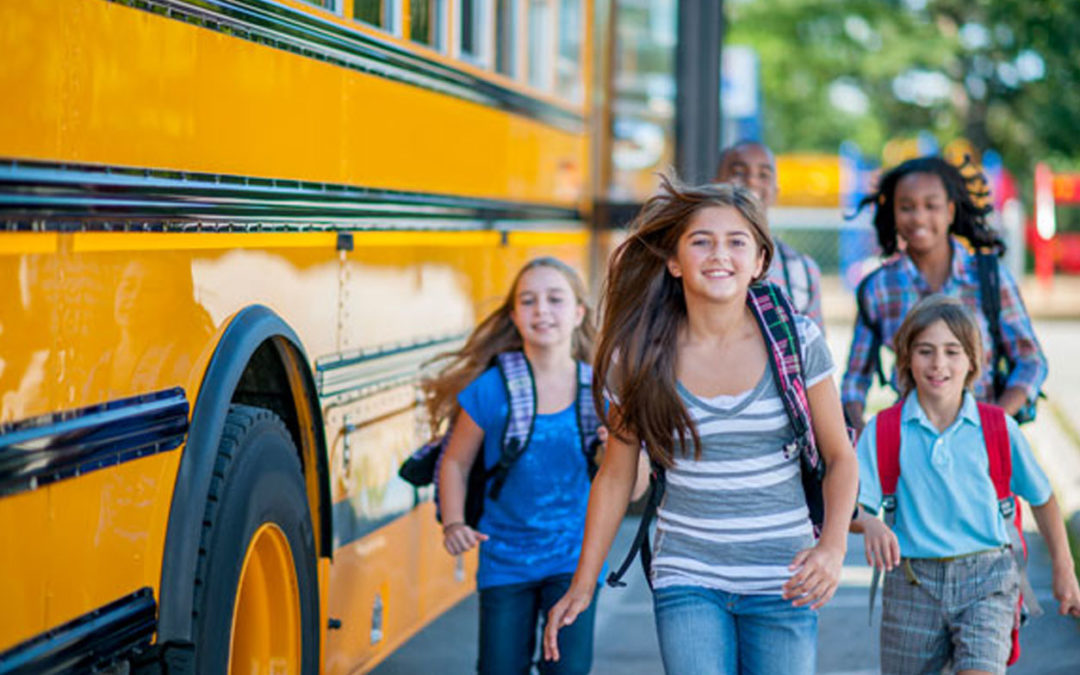
by North Shore Child & Family Guidance Center | Aug 22, 2017 | Blog
There’s no putting it off. Summer is waning and that means school is right around the corner. Although it’s no surprise when the bus comes that first day, the change can be hard for anyone to handle. The transition from carefree summer days to school days is challenging. And it’s not just kids who are stressed. Parents also suffer from the back-to-school jitters.
While parents appreciate that their children will be taken care of during the day, it is still stressful to make sure that they are emotionally fully prepared to start or return to school. Kids may experience conflicting thoughts between wanting to go back to see their friends, and yet still being scared and anxious to leave home.
Here are some tips on how to make the transition easier:
- Manage your own anxiety in a proactive way so your children will learn healthy ways to cope. The less anxious you are about the situation, the less anxious they will be.
- Ease back into scheduled days: It can be hard to go from a summer of leisure to a packed schedule in a few days’ time. Instead, start to immerse your family into a scheduled lifestyle before school starts (earlier bed and wake-up times, for example) so that they are not rudely awakened come the start of the school year.
- Maintain a healthy lifestyle: Make sure that both you and your kids are getting a balanced diet and a good night’s sleep.
- Find one-on-one time with your child and engage them in conversations about the start of the new school year. Encourage them to talk about situations (meeting new teachers, who to sit with at lunch, what to do if there’s a bully in your class, etc.) that might be challenging. It will ease their minds—and yours—if they have a plan.
- Embrace the idea of education: An education is a wonderful thing that kids can easily take for granted. Try to help them to understand how fortunate they are to attend school and make it an experience that they are excited about.
- Focus on the positive aspects of a new school year: Find the little things that make your family happy during the school year such as seeing friends, engaging in extra-curricular activities, and learning new skills. Having something to look forward to will keep your kids motivated.

by North Shore Child & Family Guidance Center | Aug 16, 2017 | Blog
As the summer comes to an end and back to school is on the mind, let’s consider our kid’s mental well-being. It can be hard to walk down the halls of a school when you’re not feeling good about yourself. Help your kids start off the school year on the right foot by promoting their self-esteem and self-image.
Here are some tips parents can share with their children:
- Stop critiquing yourself: Everyone has flaws- whether you can see them or not. Find what you love about yourself and focus on those aspects.
- Embrace your uniqueness: Be yourself by doing what you love.
- Don’t let others bring you down: No matter your age, you will come in contact with people who disagree with you and/or are unkind. Learn to ignore what others have to say and remain positive.
- Don’t compare yourself to others: It’s common and normal to be envious of what it seems others have and you do not. Remember that we never know the full scope of what others are coping with and be appreciative for the blessings in your own life.
- Sometimes “good enough” is ok: Most everything in life will not be perfect. Learn to set reasonable expectations of yourself and others and to be forgiving when things don’t go as planned.
- Dress to impress (yourself): When you look good, you feel good too. Wear an outfit that reflects your true colors and makes you feel comfortable.
- Be healthy: Exercise regularly, eat well, and get sufficient sleep. You’ll feel great and function better. Your body will thank you later if you do.
- Do things that you enjoy: Find a hobby that makes you happy and try to integrate it into your schedule.
- Set attainable goals for yourself: Goal setting gives us something to strive for and anticipate. Once you achieve your goal, allow yourself to feel pride in your accomplishment before moving on to the next one.
- Smile! It’s actually proven to make you feel good.

by North Shore Child & Family Guidance Center | Aug 9, 2017 | Blog
Going off to college, whether it is your first time or your last can be a lot to manage. There are so many internal and external costs and benefits. The responsibility of independence, as well as social, academic, and financial commitments, can feel overwhelming. The transition to college, while exciting, can often add a great deal of stress to one’s life.
Be equipped to make this upcoming year a happy and healthy one by utilizing these mental health tips:
- Stay organized: Keeping track of what you have to do, when you have to do it, and what supplies you might need, will make life a whole lot easier. This will alleviate any worrying about missing deadlines and should hopefully keep you from last minute cramming sessions.
- Eat healthy: Maintaining a healthy diet will help to keep your body balanced and feeling good. This should also help to prevent you from getting sick.
- Get some sleep: Newfound freedom and additional responsibilities often result in college students getting less sleep than they did in high school. Getting at least 6 hours of sleep is crucial to proper brain-development, staying focused in class, retaining as much knowledge as possible, and maintaining your physical health.
- Get involved: Follow an existing passion or find a new passion on campus. This will help you to connect with your school’s community and can lead to new experiences.
- Avoid drug/alcohol abuse: It is an unfortunate reality that there is an increased access to drugs and alcohol on college campuses. Do not turn to these substances as a means of fitting in or addressing the stressors of college life. If you find yourself struggling with pressure to use drugs or are caught in the cycle of addiction, please reach out to the Guidance Center at 516-626-1971 for help.
- Consider coping mechanisms: College can be a very stressful time. Between the classwork, exams, social life, and personal life, it all adds up. Find something that allows you to decompress such as exercising, crafting, listening to music, or speaking with a friend or family member.
- Find a support network: Through your experiences, you will become close with friends, faculty, and staff. Allow yourself to build a network with those that you relate to and trust.
- Visit your school’s counseling center: Many colleges and universities provide counseling services for limited to no cost. Be proactive and take note of their number or location on campus in case you find yourself in need of their services.
- Be flexible: College is a time of significant change for most young people. Mistakes are an inevitable part of the growth process. Not everything works out how we want to or how we expect it. This time in your life presents a great opportunity to build up your resilience and to learn various techniques for overcoming obstacles and correcting divergences in the future.
- Make the most of it: Study, stay safe, stay healthy, and have fun!
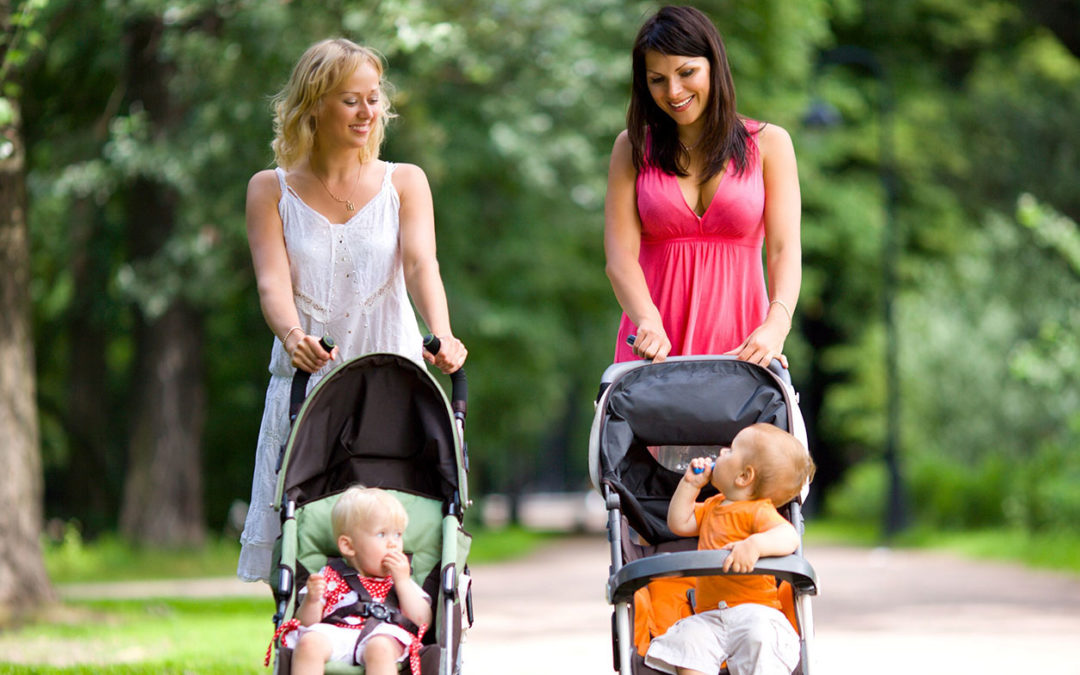
by North Shore Child & Family Guidance Center | Aug 3, 2017 | Blog
Every parent has the intentions of raising their child in the best way possible. However, not every parent has the same ideologies for what the best way really is. Parents’ differences in opinions can lead to bickering and competitive tension. This is commonly referred to as “mommy wars”, but for the sake of progressive times, we will refer to it as “mommy/daddy wars.”
Whether you are about to have your first child, or you have had multiple children, every parent can say that they have experienced this in one way or another. Some instances of mommy/daddy wars include the debates between the following:
- Birthing preference
- Breast feeding vs. bottle feeding
- Organic food vs. non-organic food
- The varying ways to approach food allergies
- Vaccinate vs. don’t vaccinate
- Giving a crying child attention vs. no attention
- Stay at home moms vs. working moms
- Helicopter parenting vs. free-range parenting
- Spanking vs. no spanking
- Attachment parenting vs. non-attachment parenting
- Co-sleeping: allow your child/children in your bed vs. not allowing them in your bed
The list could go on and on for forever. However, it is important to note that parenting is an individualized experience in which each parent has both the right and the capacity to make the choices that they feel are best for their family.
Though it can be hard to let others’ comments and opinions roll off your shoulders, it’s an important skill to master as a parent because these stresses and pressures will continue throughout the child’s life. Facing these difficulties offers parents a great opportunity to model flexibility for their kids, despite the challenge is also presents.
At the Guidance Center, we are familiar with the challenges of parenting and can help through the Diane Goldberg Maternal Depression Program, which provides rapid response and diagnosis for mothers suffering from maternal post-partum depression and other perinatal mood disorders. Vanessa McMullan, LCSW, Supervisor, The Marks Family Right From The Start 0-3+ Center, stated that, “There are so many external pressures in a mother’s life that come from family, friends, peers, and social media that it creates a negative impact on their mood. Every mom wants to do what they think is right, but when they are told that they are wrong, it causes them to feel disappointed, confused, lost, and even inadequate. These feelings sometimes result in a lack of communication about their stress.”
If you’re in need of support, contact the Guidance Center at 516-626-1971. Our trained clinicians can help you navigate any parenting struggles you may be experiencing, and our Parent Advocates can impart their wisdom for future parenting success.
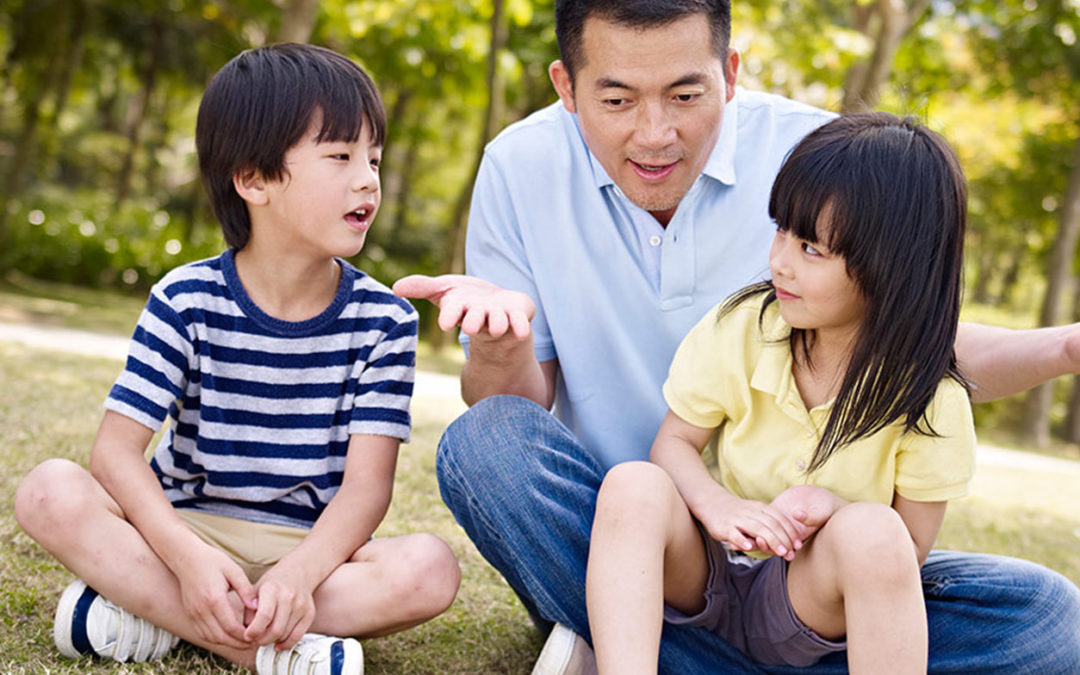
by North Shore Child & Family Guidance Center | Jul 26, 2017 | Blog
As Purposeful Parenting month comes to an end, and as back to school is near, it is important to consider the time that is spent with your children. Storytelling is a great way to pass the time as well as bond with one another.
Begin by finding an environment that is conducive to good conversation. Share stories with your children about your childhood, and what life was like for you when you were their age. In exchange, ask them to share some of their stories with you.
Storytelling is important for children of all ages. It allows them to understand their own and their family’s past and present. In addition, “storytelling is cozy, constructive, and a win-win for parent and child alike.” (Gelb, 2015).
Shared stories can address the varying emotions that everyone faces in their lives. By exploring these elements of your shared lives, you will create a connection with one another. This connection will then help to build trust between you and you children. That trust will make the transition into more difficult conversations, such as conflict-laden relationships with peers, easier on both of you. As you enter into a new school year, be sure to discuss bullying with your children.
As storytelling becomes part of the routine in your household, you will be laying the foundation for your child to become more comfortable sharing the positive and negative aspects of their life with you.
If you or your child is in need of support, contact the Guidance Center at 516-626-1971. Our trained clinicians can help you navigate any struggles that you may be experiencing.
Gelb, A. (2015, September 24). The Lifesaving Power of Storytelling. Retrieved July 26, 2017, from http://www.thedailybeast.com/the-lifesaving-power-of-storytelling

by North Shore Child & Family Guidance Center | Jul 19, 2017 | Blog
Forest bathing is a new trend within the wellness community. This method of self-care goes far beyond its literal meaning of taking a bath in a forest. Forest bathing focuses on becoming one with your environment and the nature that is around you.
In honor of Purposeful Parenting month and Parks and Recreation month, try forest bathing with your family. You don’t need to go far to immerse yourself in nature – find a local park or hiking trail in or around your community to get started. Plan wisely and be sure to pack comfortable shoes, sun protection, and water. Forest bathing has many benefits, such as clearing your mind, reducing stress, and reducing your blood pressure (Aubrey, 2017). It’s also a great excuse for your family to bond and to get off of their electronics.
As useful as forest bathing is for personal and familial purposes, it is also deeply beneficial as a mental health intervention. North Shore Child and Family Guidance Center offers a need-based program to at-risk youth which utilizes the theories that underlie forest bathing to help adolescents cope with stressors in their lives. The Wilderness Respite Program provides its participants with a gateway to the mastery of social skills and youth empowerment through outdoor activities.
A parent of a Wilderness Program participant adds “Therapeutically speaking, this program teaches my son the tools to handle his negative combative thinking through hiking in various land and weather conditions. During each hike my son participates in, I have observed positive changes in his attitude and behavior which last for several days. His thinking appears clearer, his mood swings lessen. This program has definitely increased his self-esteem. The benefits of this program are endless.”
If you or your child is in need of support, contact the Guidance Center at 516-626-1971. Our trained clinicians can help you navigate any struggles that you may be experiencing.
Aubrey, A. (2017). Forest Bathing: A Retreat To Nature Can Boost Immunity And Mood. Retrieved July 19, 2017, from http://www.npr.org/sections/health-shots/2017/07/17/536676954/forest-bathing-a-retreat-to-nature-can-boost-immunity-and-mood

by North Shore Child & Family Guidance Center | Jul 12, 2017 | Blog
July 12, 2017
In honor of Purposeful Parenting month, we will discuss what it means to be a purposeful parent and how you can be a purposeful parent.
A purposeful parent is one that strives to be and do the best for their children. This definition is fluid, as it can mold to each individual’s ideas and values.
Regardless, being a purposeful parent takes a great deal of work and commitment; the outcome of your efforts will be a family that upholds your values and treats each other with love and respect. Saying you want to be a purposeful parent, and working towards being a purposeful parent are two different things. Here are some tips for how you can begin to achieve purposeful parenthood:
- Tell your child/children that you love them.
- Everyone wants to feel loved and supported. Let your child/children of all ages know how much you care by speaking and showing your emotions.
- Create a safe environment.
- Provide for your child/children by caring for their needs and making them feel safe. Set rules for younger children and keep a watchful eye on them. Continue to provide structure for older kids but allow some leniency so that you do not over burden them. Set up emergency action plans as a family and discuss their safety with them in an age appropriate manner.
- Share your feelings with your family.
- Talking to your family about your thoughts, feelings, and what is going on in your life is important. It helps to create a bond and allows everyone to speak freely and be there for each other. Keep the language age appropriate by staying simple for younger kids and understanding that older kids may react in different ways depending on their emotions. Always show respect regardless of their emotions and remember that sometimes their emotions may overcome them.
- Treat others the way that you want to be treated.
- This is highly important for children of younger ages since they do as you do. Leading by example will help them to understand what is appropriate and should carry through with them over the years.
- Embrace each individual’s uniqueness.
- Naturally, each child will develop their own personality. This will occur throughout different ages. Whether it is a phase or their character, celebrate what each individual brings to your family and allow them to feel comfortable in their own skin doing what they love.
- Establish family traditions.
- Family traditions give everyone something to look forward to. Whether it is something pertaining to a holiday, or it’s just a creative family event, it will produce long lasting memories for the family to cherish.
- Plan fun family activities.
- Structured or unstructured, it’s always great to have fun family activities together. Engage in age appropriate activities with your child/children to create bonds between your family members. For younger kids- play outside, play a board game, craft, put on a play. For older kids- engage in something that sparks their interest as it will likely keep them more involved (and try to keep electronics away!).
- Stick to your own instincts and decisions. Changing your mind can be confusing and frustrating for your family.
- It’s okay to change your mind from time to time. But it’s best to stand firm in the decisions that you make. Young children may grow confused by what they can and cannot do and this may make them reluctant to ask. This can carry over throughout the child/children’s later years, causing them to become rebellious. By standing firm with your decisions, being clear, and engaging them in a conversation about “why” can help to paint a clear picture.
- Give your child/children responsibilities.
- Giving your family responsibilities will hold them accountable for something and will teach them that your family needs to work together as a team. As they grow older, they can gain more responsibilities. This will make them feel as though they have a purpose and will teach them valuable lessons along the way.
The Guidance Center’s Common Sense Parenting classes offer parenting tips like those above. In addition, the Marks Family Right from the Start 0-3+ Center offers parent education, therapeutic and support services for young children and their families, as well as pre-school evaluations for children ages 3-6. Sue Cohen, PhD, Director of Early Childhood and Psychological Services at the Guidance Center’s Right from the Start Center, added a final tip:
- “In today’s world, it is so important to set and follow-through consistently with limits for children in an effort to nurture healthy development. “
Furthermore, Sue states, “Parents should remember that they are not alone, it is best to work as a team, with input from a partner when available, your child’s school, and other appropriate influencers to provide a cohesive and consistent message.”
If you’re in need of support, contact the Guidance Center at 516-626-1971. Our trained clinicians can help you navigate any parenting struggles you may be experiencing, and our Parent Advocates can impart their wisdom for future parenting success.

by North Shore Child & Family Guidance Center | Jul 6, 2017 | Blog
June 6th, 2017
In 2008, legislation was passed to establish the month of July as “Bebe Moore Campbell Minority Mental Health Awareness Month” in recognition of the late Ms. Campbell’s advocacy efforts to promote public awareness of mental illness among minorities and to improve minorities’ access to mental health treatment and services.
Almost two-thirds of people with a mental illness in America do not or cannot seek help. The cultural norms of certain minority groups dictate that seeking help for mental illness is unacceptable (Culture Counts, 2001).This cultural pressure, combined with the limited access to health care and the stigma surrounding mental health in America, result in minorities being even less likely than the entirety of the general population to seek out necessary mental health services.
American Latina feminist Dior Vargas offered her personal cultural lens on mental health as “…very much like crying is a sign of weakness and mental illness is like a white person thing.” She said she was told by family, “Don’t tell anyone about these issues outside of the household” (Ziv, 2016). She also stated that “For members of ethnic and racial minority groups, the road to treatment is often blocked by cultural views of mental illness and therapy, lack of insurance and access to appropriate care, and a critical deficiency of studies pertaining to nonwhite populations.” Vargas knew that shunning minority mental health issues was not the answer and she decided to take action by creating the People of Color & Mental Illness Photo Project. Vargas collected photos of people of color who live with mental illnesses so they did not feel alone.
North Shore Child & Family Guidance Center addresses the specific needs of the Hispanic/Latino community through the Latina Girls Project. This program, begun by Associate Executive Director Regina Barros-Rivera, offers bi-lingual and bi-cultural mental health counseling, group meetings and outings for the adolescent girls suffering from depression, anxiety and suicidal ideation. The program also includes family therapy as a critical component.
Calling the situation an epidemic is no exaggeration,” says Barros-Rivera. “Studies indicate that approximately 23% of Latina teens think about, attempt or commit suicide. That’s nearly one out of four girls. In addition, nearly 50% report feeling seriously depressed.”
The group is facilitated by highly trained, culturally sensitive social workers and mental health counselors who work together to help at-risk teen girls. The group is supported by a generous grant from John and Janet Kornreich Charitable Foundation which was established to “show girls the world outside of their communities and provide them with hope for their future.” Some of their outings include: visiting Segunda Quimbamba, a Jersey City-based Puerto Rican percussion and dance ensemble; attending La Gringa, a play at the Repertorio Español in Manhattan; touring the Metropolitan Museum of Art; visiting the Nassau County Museum of Art; and seeing several Broadway shows including On Your Feet and The Illusionist.
To understand more about the history of this program go to: http://www.humansafetynet.com/latina-teens/
If you or your child is in need of support, contact the Guidance Center at 516-626-1971. Our trained clinicians can assist your family in setting your child up for successful emotional regulation throughout their life.
Chapter 2 Culture Counts: The Influence of Culture and Society on Mental Health. (2001). In Mental Health: Culture, Race, and Ethnicity: A Supplement to Mental Health: A Report of the Surgeon General. Retrieved from https://www.ncbi.nlm.nih.gov/books/NBK44249/
Ziv, S. (2016, April 27). Displaying the Diverse Faces of Mental Illness. Retrieved July 06, 2017, from http://www.newsweek.com/displaying-diverse-faces-mental-illness-387118
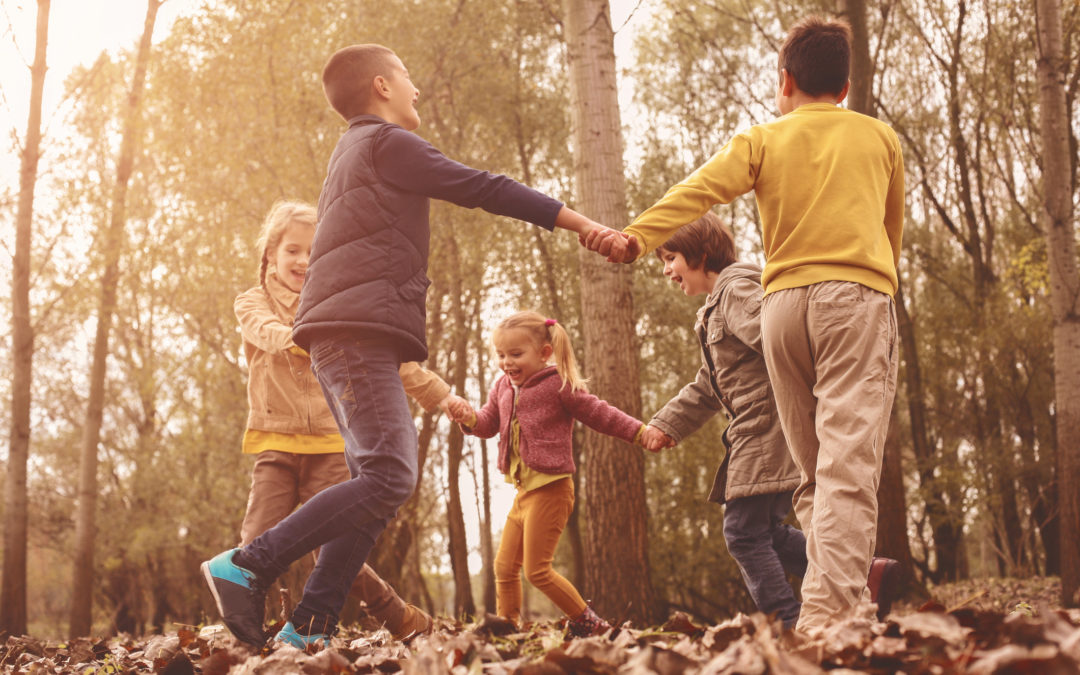
by North Shore Child & Family Guidance Center | Jun 28, 2017 | Blog
The Biopsychosocial Model of Health offers a lens through which mental health practitioners may assess the needs of their clients. This concept suggests that an individual’s mental health consists of biological, social, and psychological factors (Kidsmatter). To achieve positive mental health, all three facets must be in balance. Good social skills, positive relationships with family, friends, and peers, and strong coping mechanisms are all key to maintaining this balance. These tools develop in children over time resulting in a steady acquisition of new skills as they mature.
Active nurturing by parents has been shown to increase positive outcomes for their children. In fact, when kids are shown love and support, they demonstrate a more balanced mental health profile than those who lack the same (Kidsmatter). Risk and protective factors also play a role in children’s mental health (Kidsmatter). These are situational elements that may positively or negatively skew an individual’s delicate mental health balance, dependent on the circumstances surrounding them. The first graphic below indicates how risk and protective factors can influence children. The self is in the center because it is also influenced by the family, community, and society that surround it. The second graphic further exemplifies how children can be impacted by those that surround them by depicting the risk and protective factors that are involved. For example, children can be impacted by their families if there is harmony or disharmony. Harmony is an example of a protective factor and disharmony is an example of a risk factor. The presence of a risk or protective factor does not guarantee that your child is at risk or protected from mental health imbalance, but it increases the significance. This can be seen in the charts below (Kidsmatter; Kearney, 2015):
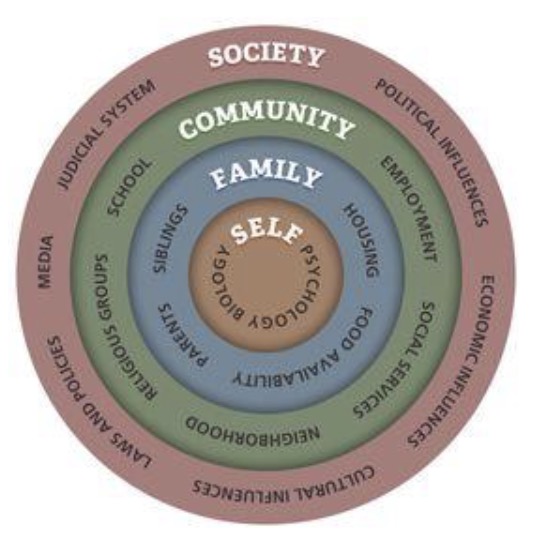
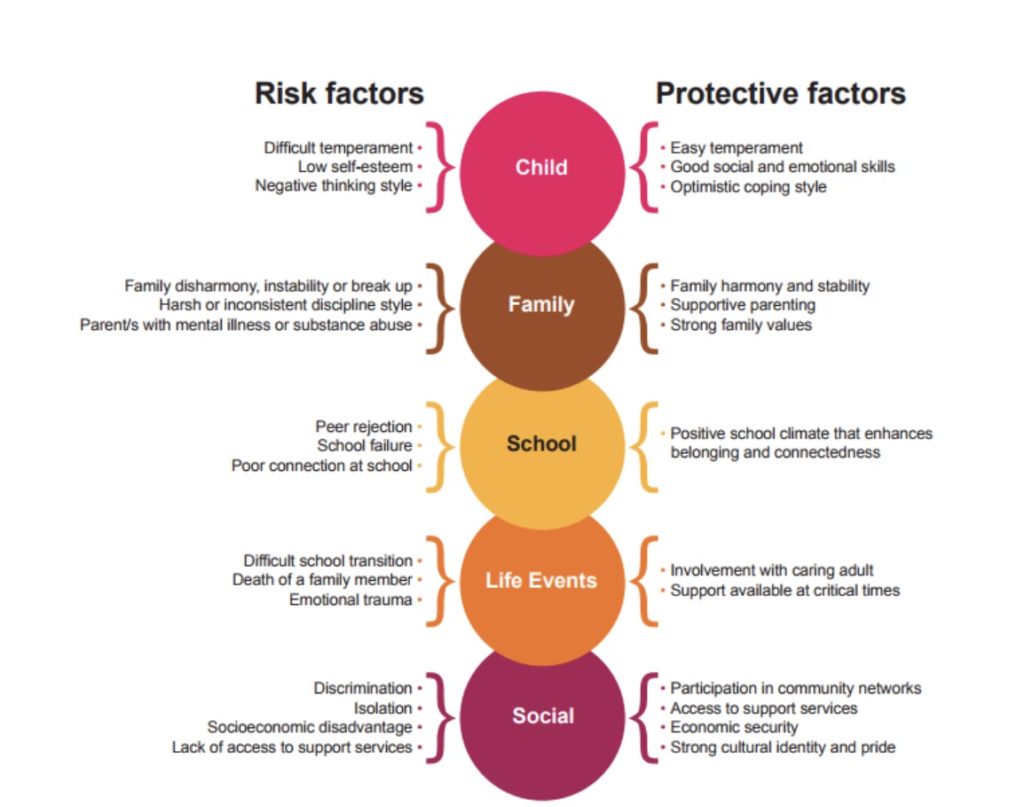
Despite this, there are some instances where regardless of the nurturing that a child receives, they may experience a mental health imbalance due to difficulties within their individual nature. For instance, the child may have more difficulty expressing and coping with their emotions, and thus, may have a difficult time adapting to new and different situations.
Early detection of children’s mental health difficulties is key. This offers parents the opportunity to seek out the most appropriate help for their child. Therapeutic family support can aid parents in their efforts to increase protective factors in their child’s life. Families who find effective resolutions for their child’s mental health challenges early, may reduce the likelihood of negative effects (Kidsmentalhealth, 2009).
If you or your child is in need of support, contact the Guidance Center at 516-626-1971. Our trained clinicians can assist your family in setting your child up for successful emotional regulation throughout their life.
How mental health difficulties affect older children (primary years). (n.d.). Retrieved June 28, 2017, from https://www.kidsmatter.edu.au/families/about-mental-health/should-i-be-concerned/how-mental-health-difficulties-affect-children
Children Mental Health. (2009). Retrieved June 28, 2017, from http://kidsmentalhealth.org/
Kearney, B. (2015, January 21). Youth Development. Retrieved June 28, 2017, from https://www.pinterest.com/pin/502151427177487993

by North Shore Child & Family Guidance Center | Jun 22, 2017 | Blog
On the heels of Father’s Day, it is worth thinking about fatherhood and mental health. Becoming a parent can be a scary prospect for a man. While it is commonly acknowledged that women may experience postpartum depression, research states that 10% of new dad’s also experience postpartum depression and 25% of men experience depression within the first year of having a child (Postpartum, 2017; Schaeffer).
Believe it or not, in the month leading up to the childbirth, the father’s testosterone levels decrease and prolactin, vasopressin, and other hormones continue to increase (Schaeffer). Scientists speculate that this is due to a mixture of stress and emotions. As a result, a man becomes more prepared to be a father because he has an increase in sensitivity to: crying, to creating an emotional bond, and to catering to other’s needs. The increase in sensitivity also makes a father more prone to clinical depression and mood disorders (Schaeffer).
It is important to pay attention to dads’ mental health because it can impact the well-being of the entire household. There is still a great deal of stigma surrounding men’s mental health. In America, traditionally, men are tasked with providing stability and anchoring the family. Culturally, they are often less likely to share or express their feelings. Nevertheless, they face many emotional challenges as a parent. Sadly, many men feel that mental health problems are a sign of weakness and often do not seek help. Consequently, there are likely a lower number of reported cases of postpartum depression for men.
It is proven that fathers who are positively involved in their family’s lives, better their children’s lives, their spouse’s life, and their own well-being (Schaeffer). Keeping this in mind, here are some tips for a father to live a happier life:
- Set aside time for yourself. It’s important to schedule a little “you time” to decompress. Do things that make you happy: hobbies, reading, seeing friends.
- Stop caring so much about what others think of you.
- Remember that there is no such thing as perfect – so let the little things go!
- Communicate. Reach out to your friends and family and be honest about your emotions. Practicing this is great for yourself and teaches your kids good coping skills.
- Live a healthy life style by eating healthy and exercising regularly. It’s proven that running and lifting weights can be beneficial for your mental health (Menshealth, 2017).
- Laugh! Laughing is proven to boost your mental health and well-being.
International Father’s Mental Health Day. (2017). Retrieved June 22, 2017, from http://www.postpartum.net/get-help/resources-for-fathers/ifmhd/
Schaeffer, C., PhD. (n.d.). The Mental Health of Dads Needs Attention. Retrieved June 22, 2017, from https://www.seleni.org/advice-support/article/its-time-to-support-fathers-mental-health
6 ways to improve your mental health. (2016, May 17). Retrieved June 22, 2017, from http://www.menshealth.co.uk/healthy/6-ways-to-improve-your-mental-health

by North Shore Child & Family Guidance Center | Jun 16, 2017 | Blog
Just yesterday, violent images and reports of shooting were once again inundating our lives with the shooting of congressional leaders, aides and police in Alexandria, Va. It was only a few weeks ago, on May 22nd, 2017, that the Manchester attacks occurred at the Ariana Grande concert which killed and injured innocent children and their parents.
It’s tough to watch the toxicity of the world tarnish the innocence of our children. No one wants their kids to know that there are horrible people out there who want to hurt and kill others. However, the harsh reality of it all is that it is in the kids’ best interest to be aware of and have open communication pertaining to the rise in terrorist attacks.
Many parents have concerns about how to speak with their children about terrorism and develop ways to reassure them that they are safe.
Following are some tips to help guide you in these discussions:
- Sit down with your kids in a comfortable environment where they are free from distractions. When you are situated, ask them what they already know about the terrorist attacks. That will help you determine how to have the conversation without delving into too much at once.
- Start by asking them how they feel. By determining their thoughts and feelings on the matter, you’ll allow them to express themselves, which will inform you on their understanding and wellbeing.
- Be honest and clear, keeping in mind the age of your child. For younger children, keep the discussion simple by utilizing words and language that they understand and are comfortable with.
- As the conversation continues, their emotions may heighten, but keep in mind that any anger, sadness, frustration, and so on is natural. Their response is in regards to the recent events, which are scary and can instill fear in anyone (Niz, 2017).
- To help them through their emotions, reassure your children that their safety is in good hands as many people work to keep them safe. Just as Mr. Rodgers says, “look for the helpers,” or look for those who are in uniform and whose job it is to help others.
- Explain that many people from all over want to help such as the police, firefighters, and doctors and nurses (healthychildren.org, 2017).
- You can also reassure them by discussing what to do as a family to practice safety such as wearing seat belts, wearing helmets, being aware of their surroundings, and having an emergency action plan established (Niz, 2017).
- Moreover, in the best way that you can, model positive coping skills such as leading a healthy lifestyle, speaking about your emotions, and maintaining consistency within the household (Niz, 2017).
- Parenting is an individualized process which gives you the authority to determine how much media exposure you want your kids to have. The older that they are, the more likely they are to know about and better comprehend the terrorist attacks through varying forms of media, and word of mouth. It’s up to you to discuss it with them.
Niz, E. S. (2017, May 23). How to Talk to Kids About Terrorism. Retrieved June 14, 2017, from http://www.parents.com/parenting/better-parenting/advice/how-to-talk-to-kids-about-terrorism/
How to Talk to Your Children after an Act of Terrorism. (n.d.). Retrieved June 14, 2017, from https://www.healthychildren.org/English/healthy-living/emotional-wellness/Pages/How-Talk-to-Children-After-Act-Terrorism.aspx?gclid=CK7w87Gju9QCFQaBswodt0oBOg























